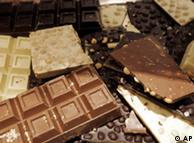A Soul cake is a small round cake which is traditionally made for All Saints Day or All Souls' Day to celebrate the dead.[1] The cakes, often simply referred to as souls, were given out to soulers (mainly consisting of children and the poor) who would go from door to door on Hallowmas singing and saying prayers for the dead. Each cake eaten would represent a soul being freed from Purgatory. The practice of giving and eating soul cakes is often seen as the origin of modern Trick or Treating.
"Toffee apple" redirects here. For the album by Australian children's musician Peter Combe, see Toffee Apple (album).
Candy apples, also known as toffee apples in the UK, are whole apples covered in a hard sugar candy coating. While the topping varies from place to place, they are almost always served with a stick of sorts in the middle making them easier to eat. Toffee apples are a common treat at autumn festivals in Western culture in the Northern Hemisphere, such as Halloween and Guy Fawkes Night because these festivals fall in the wake of the annual apple harvest.[1] Although candy apples and caramel apples seem similar, candy apples should not be confused with caramel apples. Both treats are made differently.
Contents[hide] |
[edit] History
According to the Newark Evening News 1964:
William W. Kolb invented the red candy apple. Kolb, a veteran Newark candy-maker, produced his first batch of candied apples in 1908. While experimenting in his candy shop with red cinnamon candy for the Christmas trade, he dipped some apples into the mixture and put them in the windows for display. He sold the whole first batch for 5 cents each and later sold thousands yearly. Soon candied apples were being sold along the Jersey Shore, at the circus and in candy shops across the country, according to the Newark News in 1948.
They are also known as Jelly apples, which can be found in the famous Coney Island area. Some have sprinkles on them or coconut.
[edit] Ingredients
Candy apple is made by coating an apple with a sugar layer.
The most common sugar coating is made from sugar, corn syrup, water, cinnamon and red food coloring. The sugar syrup is created by boiling the ingredients in a saucepan. The liquid should reach about 300 degrees on a candy thermometer. Dip the apple with the sugar in the "hard crack" stage. The sugar will harden within an hour.
It may be difficult to make candy apples in the summer. Humid weather prevents the sugar from hardening. [3]
[edit] Urban legend
They are popular during Halloween. Candy apples are one of the popular items that are usually given out to kids. Candy apples containing pins and razor blades are an urban legend. During the 1960's and 1970's, news reports about candy apples given to children during Halloween spread hysteria. Many parents feared that candy apples contained pins and razor blades. During the hysteria, hospitals offered free X-rays to detect foreign objects in the candy apples. It has been proven that the contamination of candy apples are an urban legend.[4]
[edit] Outside of the U.S.
In England, toffee apples are more commonly eaten on November 5th (also known as Bonfire Night or Guy Fawkes Night), and are eaten in Ireland and Scotland at Halloween. In Latin American countries, candy apples are popular throughout those countries' extended holiday season. In Brazil, candy apples are common in the festivities in honour of John the Apostle. In Germany they are most often associated with the Christmas season. They are also sometimes sold at carnivals and fairs. In China, a similar treat called Tanghulu is made by coating small fruits (traditionally hawthorns) with hard sugar syrup.
[edit] See also
[edit] References
- ^ Apples galore as event grows, thisissouthdevon.co.uk, October 9, 2008, accessed 20 October 2008
- ^ Newark Sunday News, November 28, 1948, pg.16. Newark Evening News, June 8, 1964, pg. 32
- ^ "Caramel Apples vs. Candy Apples". St.Petersburg Times. October 24, 2001. http://www.sptimes.com/News/102401/Taste/dish.shtml. Retrieved October 22, 2010.
- ^ "The History of Halloween". The History of Halloween. http://www.thehistoryofhalloween.net/?page=2. Retrieved October 22, 2010.

